Friday's Program:
Steve Brilling: Micro-Enterprise — Making a Difference in People’s Lives
 John Martinka introduced Steve Brilling, Executive Director of Entrepreneurship Program at Seattle University. Micro-enterprise is part of the mission of the department. Seattle University is focused on the whole human being and the Entrepreneurship Center is holding that fast to that by making micro-enterprise part of the mission of the department. John Martinka introduced Steve Brilling, Executive Director of Entrepreneurship Program at Seattle University. Micro-enterprise is part of the mission of the department. Seattle University is focused on the whole human being and the Entrepreneurship Center is holding that fast to that by making micro-enterprise part of the mission of the department.
READ MORE
TOP
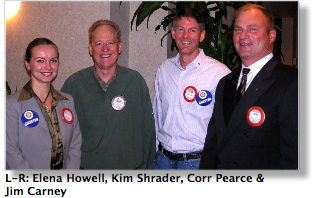
Friday Potpourri
Elena Howell provided the following invocation attributed to Marianne Williamson:
“Our deepest fear is not that we are inadequate. Our deepest fear is that we are powerful beyond measure. It is our light, not our darkness that most frightens us. We ask ourselves, ‘Who am I to be brilliant, gorgeous, talented and fabulous?’ Actually, who are you not to be?
“You are a child of God. Playing small does not serve the world. There is nothing enlightened about shrinking so that other people won’t feel insecure around you. We are all meant to shine, as children do. We were born to make manifest the glory of God that is within us. It is not just in some of us; it is in everyone. And as we let our own light shine, we unconsciously five other people permission to do the same. As we are liberated from our own fear, our presence automatically liberates others.”
Corr Pearce introduced visiting Rotarians and guest and led the pledge to the flag.
Outside, a cool fog enveloped BBRC members, guests and visiting Rotarians on this Friday morning but inside the Glendale Country Club, the atmosphere was anything but foggy.
 President Jim, much to the relief of not only our ears but our entire sensory systems, announced that Glendale is installing new microphone system to replace the one that has rendered half the club deaf. The news apparently received a thunderous round of applause but your humble correspondent was unable to hear it. (See above.) President Jim, much to the relief of not only our ears but our entire sensory systems, announced that Glendale is installing new microphone system to replace the one that has rendered half the club deaf. The news apparently received a thunderous round of applause but your humble correspondent was unable to hear it. (See above.)
The BBRC has also received word that, for the first time ever, BBRC member will lead a GSE team. Our own Sayoko Kuwahara will lead a Group Study Exchange trip to Japan in spring of 2007. The group will be in Japan for a month, totally at Sayoko’s mercy. We can rest assured that all GSE members will be on time for every event and will RSVP well in advance. Congratulations Sayoko!
President Jim continued his updates by reminding us that the club leadership plan will be enacted during the 2007-2008 Rotary year. The plan focuses on membership growth, enhancement and support as well as on improving public relations. Implementing these changes will require changes in the BBRC bylaws. These changes will be voted on soon
Jim Owens presented a flag from Ruute Austria Rotary Club to President Jim.
In what is becoming a trend, Sergeant At Arms Andrew had “nothin',” so we got a pass on emptying our pockets.
TOP
Rotary First Harvest
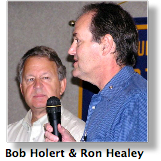 Through a complicated series of “stand up-sit down” exercises, Bob Holert recognized everyone who has worked at Rotary First Harvest and encouraged everyone else to give it a try. Bob then called on Kevin Jewell, who explained the harvest partnership program. Harvest Partners empowers members to make monthly donations to Rotary First Harvest. It provides a stable predictable source of income which allows Rotary to budget for regular expenses and quickly respond to emergency needs. Through a complicated series of “stand up-sit down” exercises, Bob Holert recognized everyone who has worked at Rotary First Harvest and encouraged everyone else to give it a try. Bob then called on Kevin Jewell, who explained the harvest partnership program. Harvest Partners empowers members to make monthly donations to Rotary First Harvest. It provides a stable predictable source of income which allows Rotary to budget for regular expenses and quickly respond to emergency needs.
Ron Healy then encouraged members to take a friend or invite another club member to join them for the work party, saying it is a good way to get to know members better and increase work party attendance. It also counts as a make-up. President Jim encouraged people to “get out and do it” on October 8th.
TOP
Walk-a-thon Update: Mark Your Calendars — It’s April 28, 2007!
 Drawing on a previously undetected well of sarcasm, Hal Teel noted the “sadness” people feel about the demise of the raffle and provided an “antidote” for the pain. Keep in mind the number $500 — the number of dollars we are asking each member to bring in for the event. Keep in mind that money alone is not the solution to walk-a-thon success. The second key to success is the number of participants. Drawing on a previously undetected well of sarcasm, Hal Teel noted the “sadness” people feel about the demise of the raffle and provided an “antidote” for the pain. Keep in mind the number $500 — the number of dollars we are asking each member to bring in for the event. Keep in mind that money alone is not the solution to walk-a-thon success. The second key to success is the number of participants.
“We are asking each member to identify 15-25 people who would like to join you for this walk, giving us 2000-3000 people from Rotary sources alone!. We will also accept a check from people who, for whatever reason, choose not to walk.”
“The YMCA is a key partner in the event and we will be approaching other groups like the Boys & Girls Club, Sammamish High School and others to participate.
“In the spirit of the Army, we’ve 'recruited' volunteers to help with the walk-a-thon,” Hal said. He then handed out an eerily familiar (think raffle) team recruitment list. I think we’ll be hearing a lot more from Hal in the future, so start thinking of your dream team of walkers. It’s never too soon to start planning.
TOP
BBRC Program Update
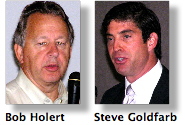 New year for programs has finally started, with Steve Goldfarb and Bob Holert co-chairing the committee. Goldfarb commented on how great it is to be on a committee with Holert because, “Bob does all the work and I don’t have to do a thing! Sounds like just the committee for Goldfarb, not that your humble correspondent has an axe to grind with Steve or anything like that. New year for programs has finally started, with Steve Goldfarb and Bob Holert co-chairing the committee. Goldfarb commented on how great it is to be on a committee with Holert because, “Bob does all the work and I don’t have to do a thing! Sounds like just the committee for Goldfarb, not that your humble correspondent has an axe to grind with Steve or anything like that.
Continuing in the morning’s “stand up-sit down” strategy, Goldfarb asked everyone who has ever brought a speaker to stand and receive thanks. Steve indicated that an exhaustive survey was conducted among all but about eight club members (funny thing is that everyone in the room seemed to be one of the eight) to determine what people want to hear. Steve promised that what we won’t be hearing is district governors, charities asking for money and Rotary rah rah programs.
The calendar is booked through the first two weeks of January, but Steve encouraged us to become active in selecting and scheduling great programs for the BBRC meetings.
TOP
 Exchange Student Follow-Up Exchange Student Follow-Up
The BBRC exchange student from six years ago, Ta Se Yeung, still keeps in touch with BBRC member Jenny Andrews.
Ta reports that he will graduate from university in Thailand this spring with a degree in Engineering. His senior project is titled "Optimization to Reduce Transportation Costs for the Siam City Cement Company” (the big company in Thailand). What an appropriate choice after living for a year in Seattle, the traffic jam capital of the free world.
TOP
Friday's Program:
Steve Brilling: Micro-Enterprise — Making a Difference in People’s Lives
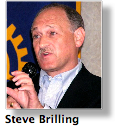 John Martinka introduced Steve Brilling, Executive Director of Entrepreneurship Program at Seattle University. Micro-enterprise is part of the mission of the department. Seattle University is focused on the whole human being and the Entrepreneurship Center is holding that fast to that by making micro-enterprise part of the mission of the department. John Martinka introduced Steve Brilling, Executive Director of Entrepreneurship Program at Seattle University. Micro-enterprise is part of the mission of the department. Seattle University is focused on the whole human being and the Entrepreneurship Center is holding that fast to that by making micro-enterprise part of the mission of the department.
The Entrepreneurship Center is part of the Albert School of Business & Economics. The school has three centers of competency: leadership, ethics and entrepreneurship. The Entrepreneurship Center was started in 1990 by Harriet Stephenson and others. The center’s advisory board is broad geographically and professionally and includes “real business people.”
The center’s mission is threefold:
1) return on imagination – prepare students for innovative futures
2) return on involvement – encourages students to work with the business community
3) return on investment – provide a return on time and money to all our stakeholders.
Students are the primary stakeholders and we want them to have a good ROI on their education.
What sets the Seattle University Entrepreneurship Center apart is:
1) focus on students – value based learning, networking, mentorships
2) relevant education – applied learning, business involvement
3) committed to the community – service learning, unique programming, micro enterprise, family business.
 In the last school year students contributed 11,000 hours to early stage companies amounting to over $1 million value in consulting services. In the last school year students contributed 11,000 hours to early stage companies amounting to over $1 million value in consulting services.
The micro-enterprise concept was started in India by a professor who wanted to contribute to solving poverty in India. Internationally, small loans of $50-$100 are used to start a business that could move them out of poverty. It may be as simple as buying a cow to produce saleable milk or a sewing machine so a woman can produce garments for sale. Repayment rate is 95-97%, much higher than typical loans. In the United States, the typical micro loan is $500-$1000. These programs are inspirational because they treat people respectfully and allow them to succeed on their own merits.
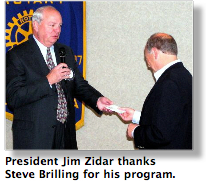 The micro-enterprise program works with two lenders and 21 small businesses (64% owned by women — lower than international numbers). It is a very intensive, very personal approach that has prompted some interesting lessons. One client thought needed a new accounting system. However the students found out he’d been in business for 8 months and had one sale for $20. The students challenged him to get off the dime and do it. Surprisingly he rose to the challenge and, with their help, created a real business. The micro-enterprise program works with two lenders and 21 small businesses (64% owned by women — lower than international numbers). It is a very intensive, very personal approach that has prompted some interesting lessons. One client thought needed a new accounting system. However the students found out he’d been in business for 8 months and had one sale for $20. The students challenged him to get off the dime and do it. Surprisingly he rose to the challenge and, with their help, created a real business.
The center is working to establish a micro-fund to raise $1 million for an endowment that would allow them to take on riskier loans. They are considering using some of these funds to fund their Nicaraguan projects which would provide an ROI that would be reinvested into the fund.
The presentation ended with many questions from club members and in honor of his presentation, Rotary First Harvest gets 750 pounds of food.
TOP
WEB FUN
FREQUENTLY ASKED QUESTIONS: ARE THERE REALLY ANY ANSWERS?
Steve "Frick" Goldfarb and Rick "Frack" McManus, along with assorted other frickenfrack, participated in this enlightening email exchange last week after the announcement of the recently established Frequently Asked Questions section on the website:
McManus: If we receive emails with frequently asked questions (though I wonder how frequent a question needs to be asked to make it onto the list) will we run out of questions?
Goldfarb: To your point, Rick, do we now need to enter “how frequently does a question need be asked to be a frequently asked question”? Also, in talking frequency, is there a time limit. I mean if the same question gets asked once every year, and it has been 20 years, is that a FAQ, e.g. Is today Rourke’s birthday? Conversely, if a question is asked many times in a short period of time, but is never asked again, is that a FAQ, e.g., How much did Rourke get fined today?
McManus: Steve brings up an excellent point. Not only do we need to decide the frequency in which a question is asked over a specific period of time before it qualifies as a FAQ, but the quality of the question being asked must be evaluated to determine if it is FAQ eligible. Also, who is eligible to submit questions? Some Rotarians have a need to ask many questions while others rarely ask any. Will each Rotarian be allowed a quota of questions to be submitted for FAQ approval and will this quota be reset on a monthly, quarterly or annual basis? Also, will these quota’s be transferable within the club?
Goldfarb: What about Rotarians who ask the same question over and over? Does a FAQ have to come from a different source each time? What if some members may be more dense or more annoying? I am beginning to have many FAQ myself as to the FAQ section of the web-site. We could break it down into sub-sections?:
FAQ-Frequently Asked Questions (each one a different question)
QAF-Questions Asked Frequently (one question asked multiple times)
AQF-Asking Questions Frequently (a list of the Rotarians who ask the most questions)
Any questions?
Goldfarb: Just trying to entertain, but you bring up a good question:
Why is the internet flooded with fluff? Can we put that on our FAQ list?
[At this point, one of the messages was apparently sent to the entire BBRC mailing list — oops — which resulted in responses from the entire frickandfracken group!]
Andrews: Huh?
Cummings: I think there are two components of Q&A going on here.
One is the FAQ, which is typically static and composed of common questions we all seem to answer to the broad audience of people we talk to about Rotary and the BBRC (What is Rotary? How big is the BBRC? What kind of people are in your club? When do you meet? How much does it cost? What do you do most of the time? What has the BBRC done to make a difference? etc..)
The second is the “BBRC Community” which is more of an ongoing discussion alias (BLOG, WIKI) where people can ask anything and someone who knows or is responsible for that area of the club answers, in a timely manner.
I have both an FAQ and a community for the program I run at Microsoft. The FAQ I built with a couple of people who know the program and the people we want to communicate with well, and it hasn’t really changed over the last 2 years because the general questions are always the same. The community is a global (external to Microsoft and posted on Microsoft.com) contact/feedback alias which I keep an eye on and make sure questions are answered or the person asking is contacted within a couple of days to say we don’t know or we’re working on an answer. This is where non-standard questions come in e.g. Is Steve Goldfarb in your club? Who is your president? Can I make a donation to First Harvest? Why isn’t anyone selling me a raffle ticket this year? etc.
Anyway, that’s what I think we are talking about here. If it is, I’m happy to help build an FAQ set of questions and/or field general questions from the BBRC website.
Miller: I think we should have our district governor weigh in on these questions.
Face: May I weigh in here? By frequency, are you referring to tone and pitch or just the quantity? Its all so confusing ...
Kuwahara: Robin (Stark)!! Look what you started!!!
Young: Enough already! This is why the internet is flooded with fluff. One more of these and you guys go on my junk email list
And, that's how it works. We now know why the internet is flooded with fluff.
TOP
|



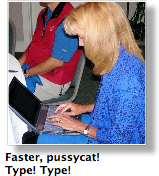



 Through a complicated series of “stand up-sit down” exercises, Bob Holert recognized everyone who has worked at Rotary First Harvest and encouraged everyone else to give it a try. Bob then called on Kevin Jewell, who explained the harvest partnership program. Harvest Partners empowers members to make monthly donations to Rotary First Harvest. It provides a stable predictable source of income which allows Rotary to budget for regular expenses and quickly respond to emergency needs.
Through a complicated series of “stand up-sit down” exercises, Bob Holert recognized everyone who has worked at Rotary First Harvest and encouraged everyone else to give it a try. Bob then called on Kevin Jewell, who explained the harvest partnership program. Harvest Partners empowers members to make monthly donations to Rotary First Harvest. It provides a stable predictable source of income which allows Rotary to budget for regular expenses and quickly respond to emergency needs.  Drawing on a previously undetected well of sarcasm, Hal Teel noted the “sadness” people feel about the demise of the raffle and provided an “antidote” for the pain. Keep in mind the number $500 — the number of dollars we are asking each member to bring in for the event. Keep in mind that money alone is not the solution to walk-a-thon success. The second key to success is the number of participants.
Drawing on a previously undetected well of sarcasm, Hal Teel noted the “sadness” people feel about the demise of the raffle and provided an “antidote” for the pain. Keep in mind the number $500 — the number of dollars we are asking each member to bring in for the event. Keep in mind that money alone is not the solution to walk-a-thon success. The second key to success is the number of participants. 
 Exchange Student Follow-Up
Exchange Student Follow-Up 

